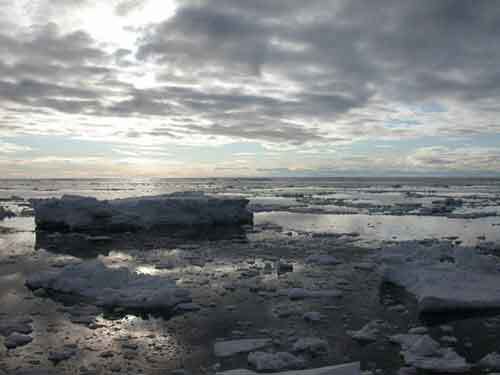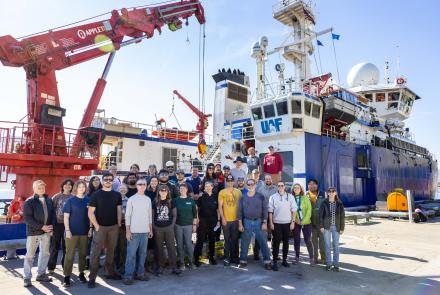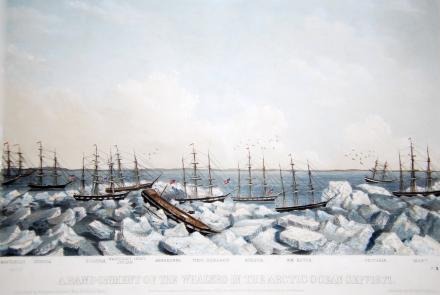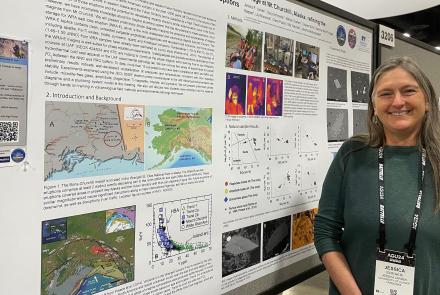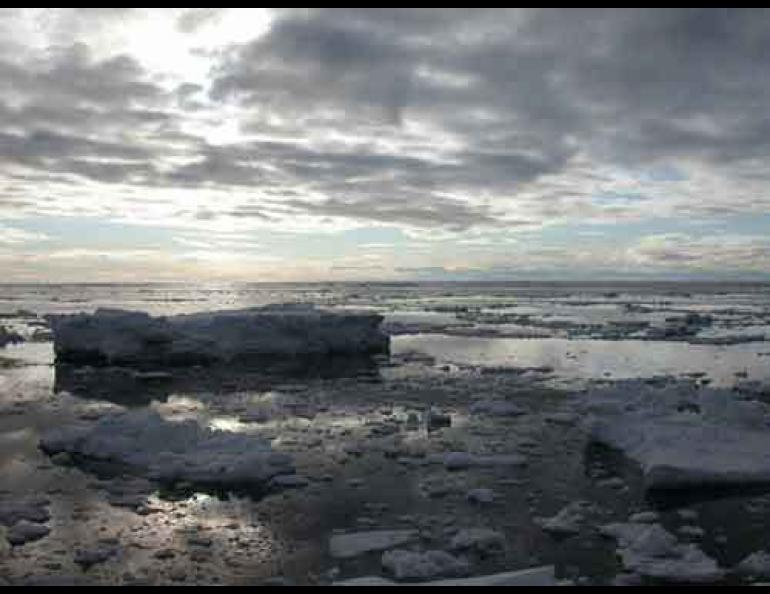
Northern sea ice continues to shrink
Since 1979, the first year we were able to look at sea ice from above with satellites, scientists have never seen less ice floating on the northern oceans at this time of year.
“This April (2007) has the lowest sea ice extent on record of any April we’ve seen before,” said Mark Serreze, a sea-ice specialist and senior research scientist with the National Snow and Ice Data Center in Boulder, Colorado. “We’re setting ourselves up this summer for a very large ice loss.”
Serreze’s observation comes at a time when he and his colleagues have written a paper in which they concluded that northern sea ice could disappear much earlier than computer models suggest.
“We’re a good 30 years ahead in ice loss than what the models are showing,” said Walt Meier of the University of Colorado. “Instead of losing ice in summer near the end of this century, it might occur before 2050.”
Meier’s colleague Julienne Stroeve is the main author on a paper titled “Arctic sea ice decline: Faster than forecast,” published May 1 in Geophysical Research Letters. They found that during the past 50 years, arctic sea ice has been disappearing three times as fast as the average rate of loss that computer models have shown.
If, in some not-too-distant summer, we lose northern sea ice, polar bears will almost surely be doomed, or at least pushed onto land where biologists think grizzlies will out-compete them. The fabled Northwest Passage shipping route would open the far north to shipping travel. And more open water would absorb heat that the ice reflected, adding warmth to the Arctic and places far from the Arctic. In winter, sea ice will always be present to some extent because the Arctic is such a cold place.
Some of the warming that has led to a smaller ice pack on top of the world is due to greenhouse gases and some is due to natural processes, said John Walsh, chief scientist at the International Arctic Research Center at the University of Alaska Fairbanks.
“The system has been given a kick,” he said. “Something’s pushing it away from the past climate state.”
Along with the effects of our increased emissions of carbon dioxide and other greenhouse gases, a natural process called the Arctic Oscillation also impacts the amount of northern sea ice.
“In the early 1990s, winds associated with the Arctic Oscillation pushed older, thicker ice out of the Arctic (where it melted),” Walsh said. “The Arctic Ocean never recovered from that in terms of thickness of ice, and the edge has retreated even more because thinner ice melts easier in the summer.”
The Colorado scientists think global climate models—supercomputers that try to simulate Earth’s conditions—might be lagging behind reality when it comes to disappearing sea ice because it’s hard for modelers to include the effects of sea ice’s reflection of sunlight and to account for warm water pulses from the Atlantic that affect the ice from below.
Igor Polyakov is a scientist at the International Arctic Research Center who leads a program of scientific cruises to the Arctic Ocean in which scientists discovered these warm pulses of water (see Alaska Science Forum 1754: "Warm Atlantic water heads north").
“The impact of oceanic heat on ice is a very important part that was largely ignored before (in the models),” Polyakov said.
With instruments they have attached to moorings throughout the vast Arctic Ocean, Polyakov and his colleagues are tracking this warm water from the Atlantic as it circulates. They believe that warm water is in part responsible for April’s record low ice extent, because the warm pulse of water is now in the Eurasian part of the Arctic Ocean, where much of the ice is missing this spring.
